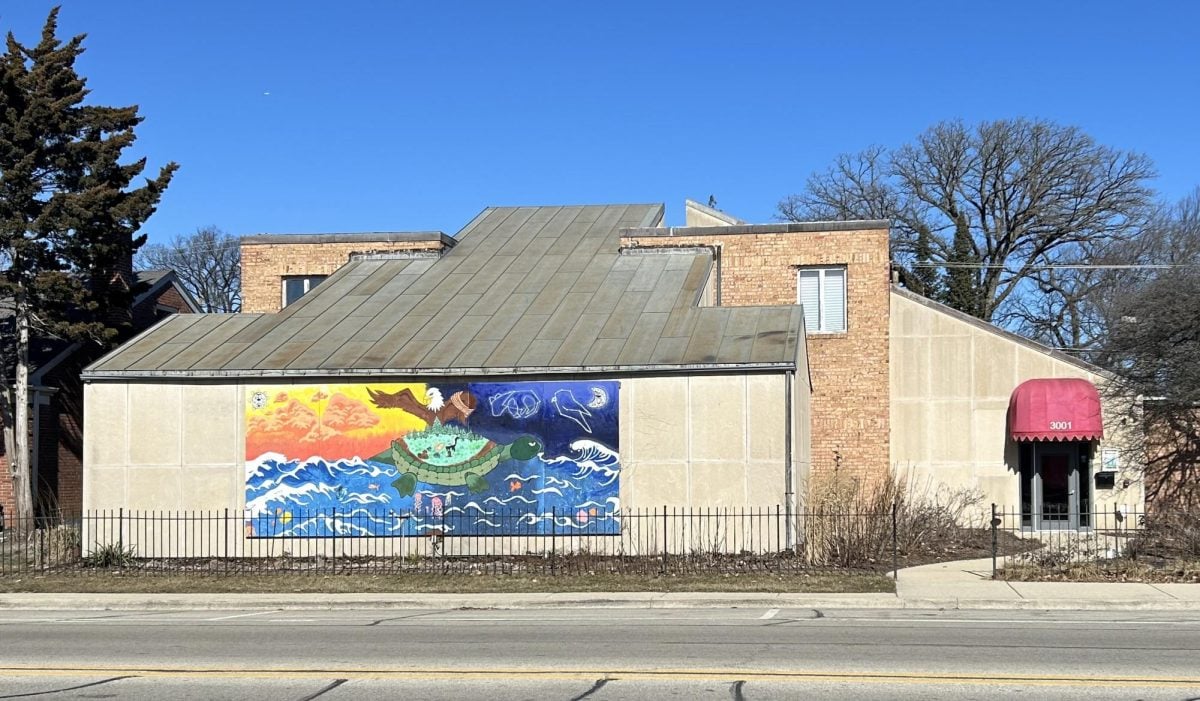At the end of last year, staff at the Mitchell Museum of the American Indian found an eagle staff, a Native artifact made with eagle feathers and a deer antler, but couldn’t trace its origins, according to Kim Vigue, the museum’s executive director.
She said the museum gifted the staff to local Native veterans, who used it for the first time at the American Indian Center’s 70th annual Pow Wow in December.
“(It was a) really beautiful moment,” Vigue said. “It was a really private moment where we handed it off to them and knew that it would be well cared for.”
This repatriation is part of the museum’s broader goal to display and represent Indigenous stories, she said.
The museum is currently undergoing a rebranding to focus more on Native tribes in the Chicago and Great Lakes region. The rebranding includes a new mission statement, name and logo.
Last year, the museum went through a strategic planning process funded by an Evanston Community Foundation grant. The staff created a three-year plan that included steps to rebrand the museum, according to Susan Kelsey, the museum’s board president.
The inspiration for this rebranding started in 2022, when the museum’s leadership became majority Indigenous, Vigue said. She said the leadership wanted to respectfully and accurately tell Native stories, something that has been a “prolific problem” in the past.
The museum’s new mission rests on three pillars: education, advocacy and awareness — all focused on Native communities in the Chicago and Great Lakes region.
The museum holds monthly programming about Indigenous art and culture, Kelsey said. This year, the museum has hosted Native Book Fairs, featuring six books written by Native authors, free of charge to families and children.
For advocacy, Kelsey said the museum is involved with curriculum development in support of Illinois House Bill 1633, which requires the teaching of Native American history in Illinois public schools starting in the 2024-2025 school year. The bill was signed into law by Governor J.B. Pritzker in August 2023.
The museum aims to create awareness about local Native communities in both its Native and non-Native audiences, Kelsey said.
“We have been focusing on education in current Indigenous lives, not necessarily historical parts of it,” she said.
Vigue added that the museum’s localization efforts are driven by visitors who want more information on the Native people who live in the area. She said the museum’s rebranding work also stems from the community to ensure the people whose stories are being told feel represented.
The museum has been collecting feedback from community members through a form on their website. The majority of responses, especially from the Native community, have been “extremely positive,” according to Kelsey.
Some people have told the museum they want to preserve the current name to honor its founders, Kelsey said. But she thinks the museum needs a new name that more closely reflects its core values and new mission, she said.
Kelsey said there is a place to “preserve the legacy” of the Mitchell family by naming an exhibit space or program after them — even if the name is changed.
Internally, the museum’s current priority is making sure artifacts are respectfully displayed and cared for, Vigue said. The gifting of the eagle staff is just one example.
The federal government also tightened regulations relating to the exhibition of Native American remains and artifacts in January. The regulations require museums to get consent from Native American tribes before displaying certain items and return them upon tribes’ request.
The museum has since covered one of its exhibit items until it can be returned to its tribe.
Vigue said the museum is also working to refocus its exhibits on local tribes. The museum’s next exhibit will feature work from contemporary Native artists in the Great Lakes region, according to Joseph Gackstetter, the museum’s development director.
He said this will “shine a light” on the Great Lakes’ Indigenous cultures through art.
Gackstetter said he feels it’s the museum’s responsibility to represent the “complex histories” of the Great Lakes region, where the museum resides. He said he hopes the museum’s work will inspire other organizations to be more inclusive of the people they represent.
“Hopefully it’ll have a broader impact, and it’ll help promote practices of more authentic representation in organizations, especially museums, that are looking to and that seek to represent other cultures,” Gackstetter said.
Email: anaviprakash2027@u.northwestern.edu
Twitter: @anavi_52
Related Stories:
— Mitchell Museum to create K-12 Native studies curriculum
— Mitchell Museum’s ‘No Rest’ calls attention to murdered Indigenous women



















